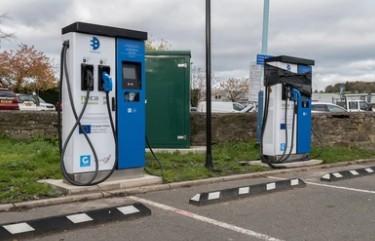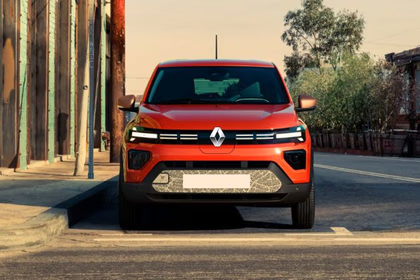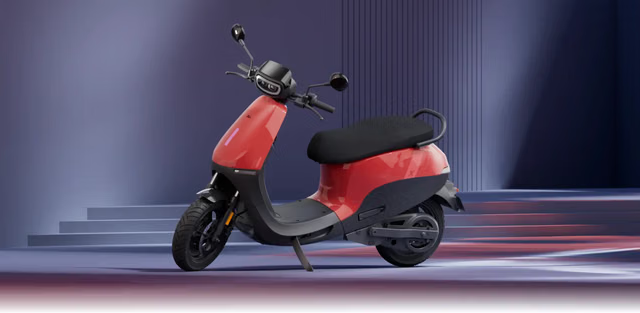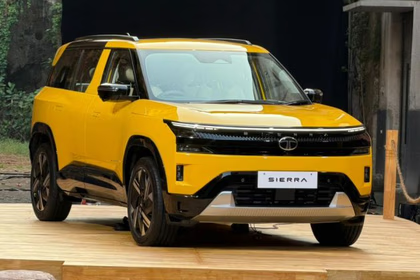With sustainability and clean energy quickly becoming a global demand, the concept of electric vehicles, or EVs, is at the forefront of this change. EVs have gained a tremendous market in the past years in India, owing to environmental consciousness, an increase in fuel prices, and technological development.
- Overview of the PM E-Drive Scheme
- Subsidy Coverage Under the PM E-Drive Scheme
- Fast Charging Infrastructure for Electric Vehicles
- Key Guidelines for Setting Up EV Charging Stations
- Priority Cities for EV Charging Stations
- Step-by-Step Implementation Process
- How the EV Charging Station Subsidy is Disbursed
- Conclusion
However, one of the biggest challenges that has so far hindered the broader adoption of EVs has been insufficient charging stations. This is a big challenge, and to add to it, the Indian government has recently started an ambitious project to install EV charging stations across the country.
The PM E-Drive is part of the larger Rs 2,000 crore fund, also known as the National Electric Mobility Mission, and offers up to 100 per cent EV charging station subsidy for installing EV charging stations.
This step draws India closer to a cleaner and greener environment because it ushers in the provision of charging points that are rapid and efficient, without which electric vehicles cannot be popularized.
Overview of the PM E-Drive Scheme
The Ministry of Heavy Industries (MHI) launched the Prime Mover (PM) E-Drive Scheme to boost electric mobility. This integrated program aims to provide funding support to both public and private corporations and companies willing to set up ev charging station subsidy in india.
The scheme will help overcome the major challenge of the lack of charging points, which has remained a major barrier to expanding any electric vehicle market in the country.
Something that makes users appreciate the scheme is the potential whereby the government bears all the costs of putting up the natural monopoly, including going to the extent of subsidizing up to 100% of the upstream infrastructure that may be required to lease space for buyer-power provision to support the establishment of EV charging stations.

These components include transformers, sub-stations, electrical grid connections, and other basic facilities requisite to charging stations. The government grant targeting charging stations helps to minimize the cost for the organizations interested in installing these charging stations.
Are you interested in knowing more about some of the current trends in green mobility? For more information on the future of EVs, check the following link.
It assists them financially in overcoming the considerably high initial costs associated with establishing the requisite infrastructure.
Subsidy Coverage Under the PM E-Drive Scheme
The PM E-Drive scheme is an attractive incentive scheme covering up to 80 percent of the cost of upstream infrastructure with a possible maximum subsidy on ev charging stations.
Upstream is an important part of establishing the charging stations since it pertains to electrical utility systems, power substations, and wiring, among other requirements that enable the charging stations to function. The scheme will aid the government in a robust EV charging network by establishing 72,300 new charging points in India.
These charging points shall embrace the different types of electric vehicles as will be shown in the following: Electric Two-wheelers, Three-wheelers, Four-wheelers, Buses, and Trucks; in a way that all categories of electric vehicles, including Personal use electric vehicles, public electric utility vehicles, and freight vehicles among others shall be supported.
Fast Charging Infrastructure for Electric Vehicles
The classification of the PM E-Drive scheme includes not only the upstream infrastructure finance but also a focus on fast charging stations. Fast chargers are critical to address the requirement of EV consumers to refuel their automobiles quickly and charge fast so that they have no issues covering long distances or commuting daily.
The government has listed 40 cities nationwide where priority will be given to establishing fast charging points. These cities are then chosen based on their population, the usage of electric cars, and the level of need for a charging system. The shortlisted cities will act as the first market to receive charging infrastructure to ensure a safe and convenient charging station network.
The breakdown of the target number of fast charging stations under the scheme is as follows:
- Twenty-two thousand one hundred fast chargers will be set up for electric four-wheelers, including light passenger vehicles, ambulances, and commercial vehicles.
- 4,8400 fast chargers will be installed for electric two-wheelers and three-wheelers as the segment has evolved quickly, especially in urban cities.
- One thousand eight hundred fast chargers will be installed for electric buses and trucks, which are instrumental in building a transition to electric public transportation and goods movement.
This approach guarantees that all-electric vehicle markets are provided with proper charging facilities so that the expansion of electric taxis, buses, and delivery truck fleets would supplement individual usage of electric cars.
Key Guidelines for Setting Up EV Charging Stations
To increase the reliability, safety, and overall performance of the EV charging stations, the Ministry of Power has set standard procedures for their installation and operation. The listed guidelines include safety features, charging capabilities, and relative service provisions for different categories of EVs
Here are some of the key guidelines for setting up charging stations under the scheme:
- Electric two-wheelers and three-wheelers must have a minimum battery charging provision of 12 kW.
- Such electric four-wheelers should be capable of charging at least 60 kW.
- Electric buses and trucks must be capable of at least 240 kW of end-of-shift charging.
These charging capacities are required to enable the structure to accommodate the increasing use of EVs and large vehicles as they call for higher charging power.
Additionally, the guidelines mandate the installation of sufficient fast chargers both in cities and on highways to ensure widespread access to charging infrastructure:
- Electric four-wheelers have to be one fast charger in cities; for two-wheelers and three-wheelers, there should be at least two fast chargers.
- At least one fast charger should be available for electricity-run buses and trucks, whereas, for electricity-run four-wheelers, two fast chargers should be provided for every hundred kilometers.
This approach ensures that CHAdeMO members can get charging stations readily within the markets and other formative regions and long-distance routes so that the prospects of electric mobility expand across the nation.
Priority Cities for EV Charging Stations
To have the most effect on the PM E-Drive scheme, the Indian government subsidies for ev charging stations has recommended certain more focused cities that would be used for EV charger deployment. These cities were chosen depending on the size of the city, the actual number of operational electric vehicles, and their role in the mechanistic adoption of electric vehicles.
The government has categorized the priority cities into the following groups:
- Cities with a population of more than 40 lakh – In terms of demand for EVs and the proliferation of electric vehicles, these are the biggest cities in the country.
- Cities with a population of 10 lakh+ – These cities are witnessing the rising demand for EVs, which will be the key driver to the EV segment.
- Satellite towns and capital cities- There are also some important markets for EVs, and an adequate number of charging stations will support them.
- Heritage tourist and religious places – These places have a large congregation, and anybody owning an EV would require charging stations to continue with his trip.
Estimating that electric cars would grow to be widely adopted and demanding that electric vehicles should also be equipped with charging points, the government plans on establishing the required network of EV charging stations in the chosen cities and towns only to maintain the scope and development of electric mobility across both urban and rural settings among all the owners of electric vehicles.
Step-by-Step Implementation Process
The putting in of EV charging stations under the PM E-Drive scheme will go through a mapped-out process to guarantee successful, quick deployment of the charging stations to meet the needed standards. The step-by-step implementation process is as follows:
- Setting Up State Nodal Departments: Every state will also form a nodal department to monitor the scheme’s functioning. This department will liaise with the Ministry of Heavy Industries and ensure the approval and outstanding processes are met by this Ministry.
- Preparing Proposals and Feasibility Studies: The state-level authorities will develop proposals and assess the feasibility of the installation of EV charging stations, select suitable locations, and define the infrastructure needed.
- Project Approval: The state-level committee will review the proposals and send them to the Ministry of Heavy Industries for approval. After the approval of the charging stations, the entities can proceed with setting up the charging stations.
- Subsidy Approval and Tendering Process: When the projects are underway, the MHI will offer the government subsidy for charging stations and launch the procurement for charging infrastructure. This inestimable puts the best contractors and suppliers into the project.
- Subsidy Disbursement and Installation: Part of the ev charging stations subsidy will be distributed in phases, and charging stations will be implemented. The last one involves checking that the charging stations are active and can attend to the users of EVs.
How the EV Charging Station Subsidy is Disbursed
The subsidy for EV charging stations under the PM E-Drive scheme will be disbursed in three phases:
- 30% of the ev charging subsidy is to be paid after activating the competitive bidding process, followed by the contract award.
- Forty percent of the subsidy will be paid upon completion of the EV charging stations.
- The remaining 30% will be given after the charging stations are fully established and running for electric vehicle users.
This phased approach helps the installation process to be on schedule and ensures the charging stations are of the right standards before disbursement of the full subsidy of EV charging stations.
Conclusion
It is a welcome relief that the Indian Government is considering subsidizing up to 100% of the cost of EV charging stations. Since the government continues to subsidize the development of fast charging solutions, electric cars are set to gain popularity faster across the nation.
The PM E-Drive scheme not only solves the problem of needing more charging point locations but also builds the necessary infrastructure for the future demands of EV owners. India is proceeding with this subsidy to prepare for a new, clean, green, and sustainable environment marked by electric charging stations.
To this end, proper EV charging stations will be placed across the nation to guarantee that the country will be ready to accommodate the increasing demand for these environmentally friendly automobiles, hence reducing the emission of greenhouse gases and improving the air quality in society to support future generations.
As the world turns to renewables and green mobility, India’s decisive measures to prop up the EV charging station government subsidies for ev charging stations growth will go a long way towards propelling the country’s EV revolution.
The study’s objectives are to use the government subsidy as a lever to bring about future changes that will transform a long-standing internal combustion engine industry, now a thing of the past, with electric cars as the future of individual transportation. For detailed information on electric vehicle initiatives and government policies, click here.





